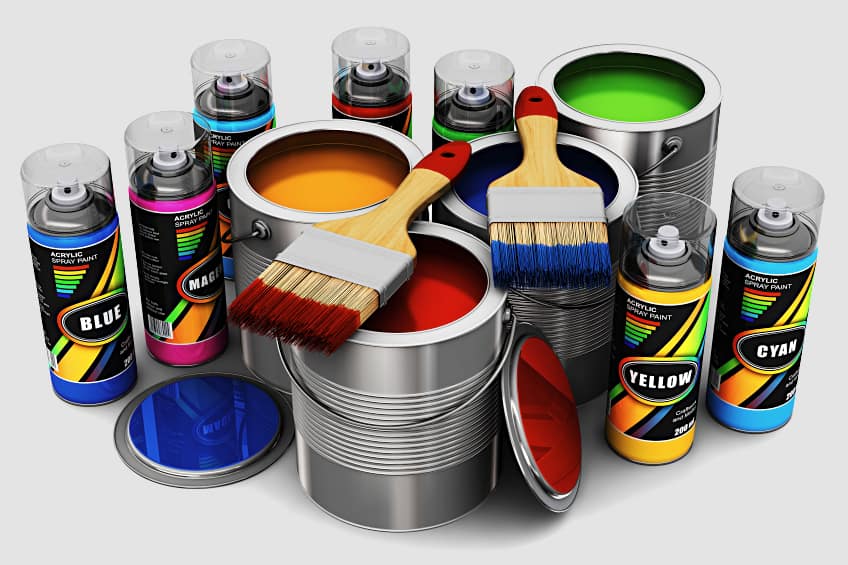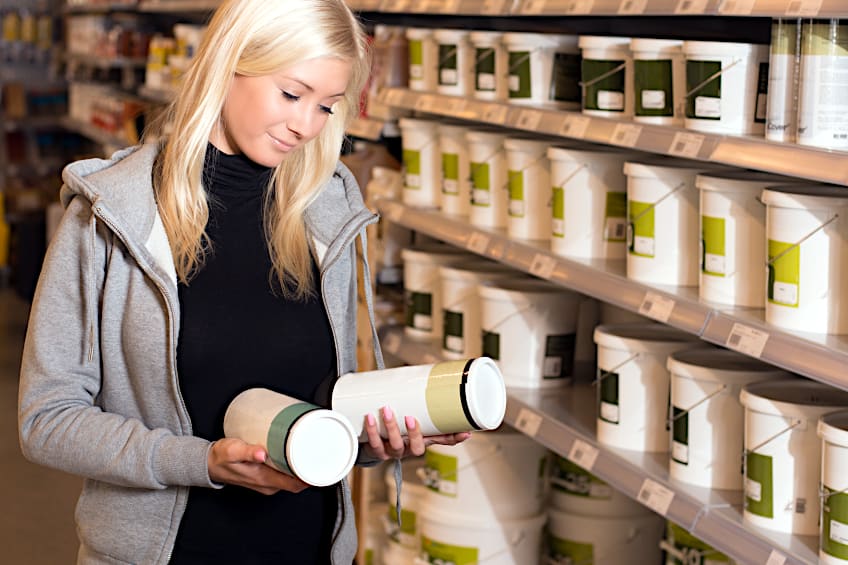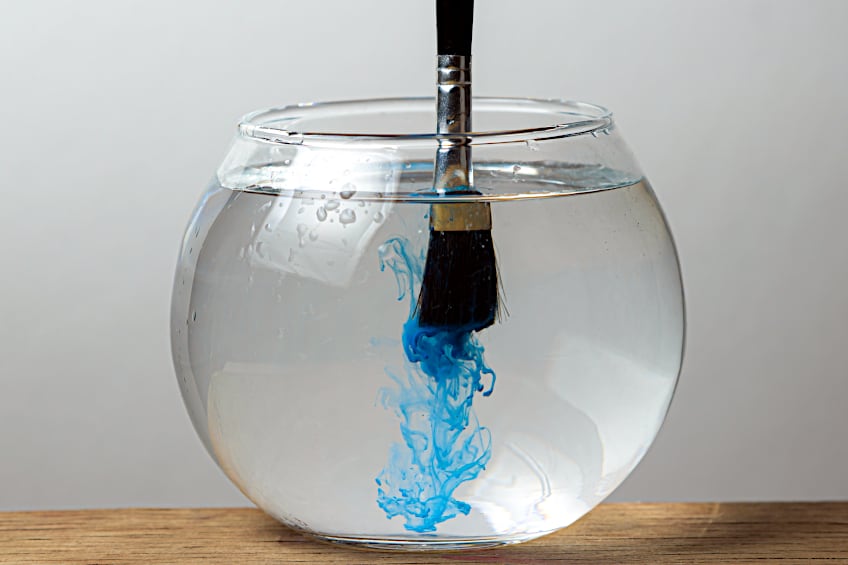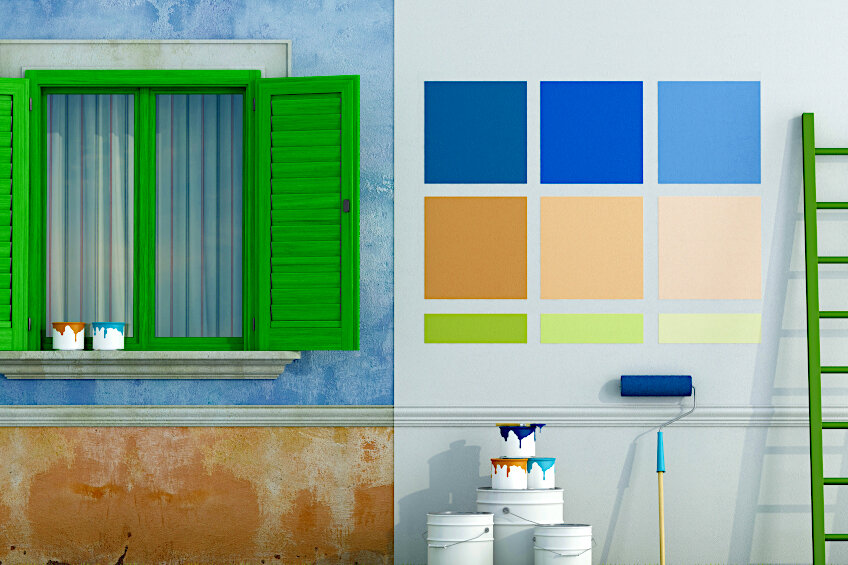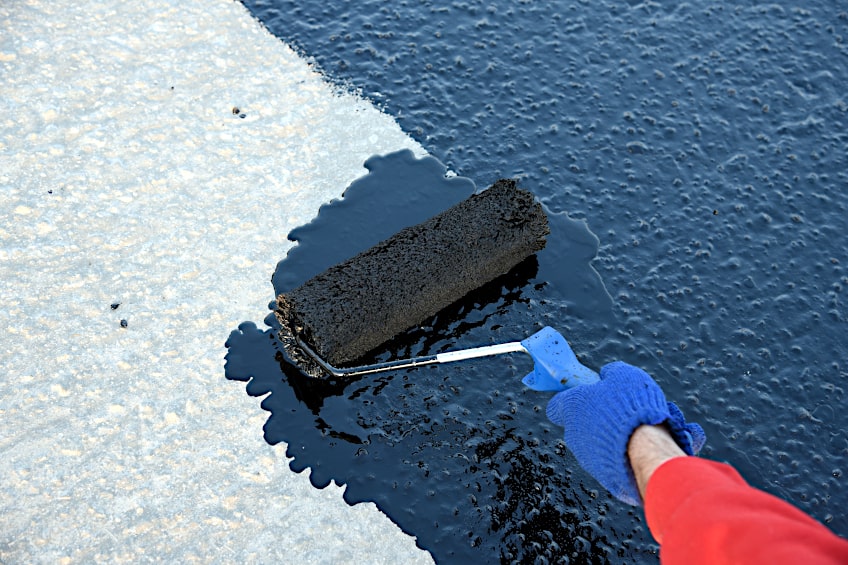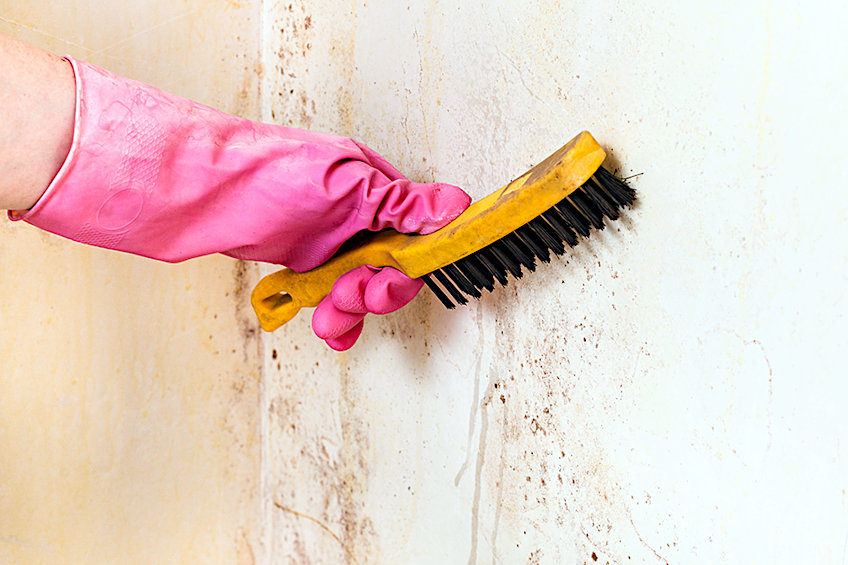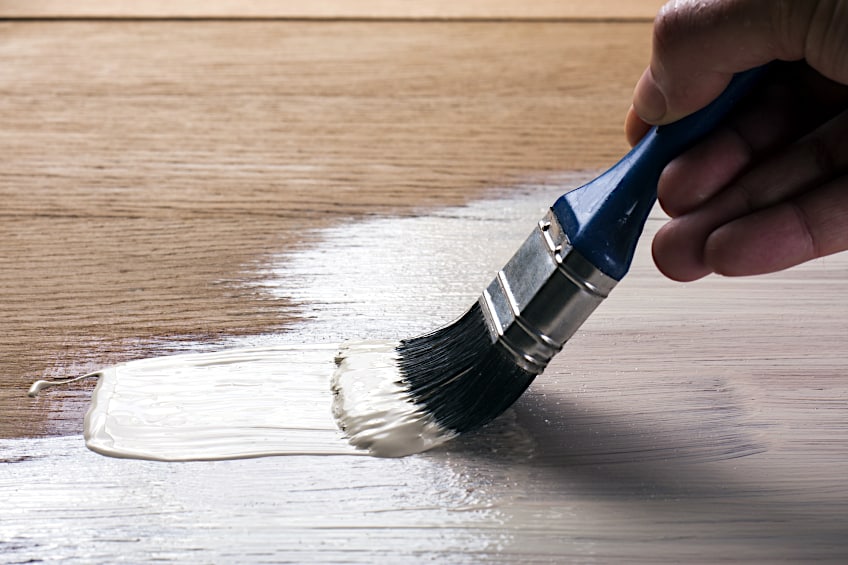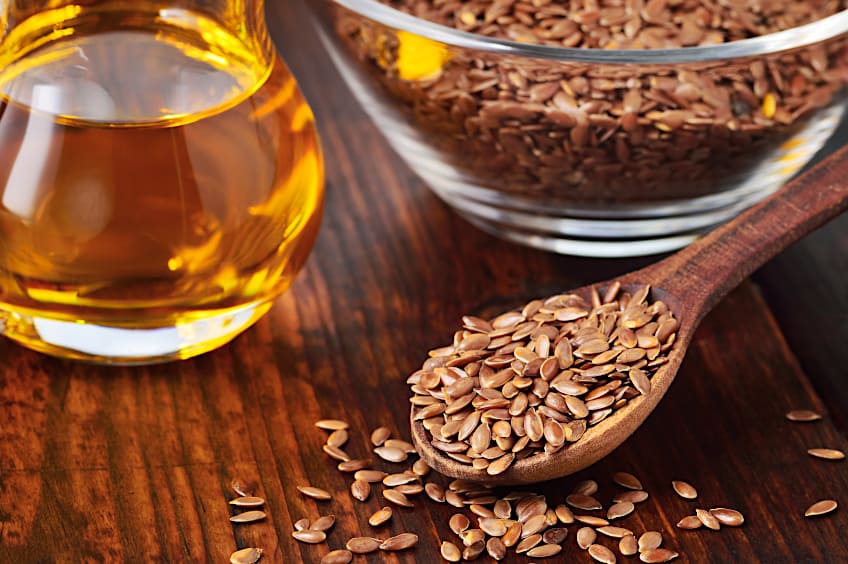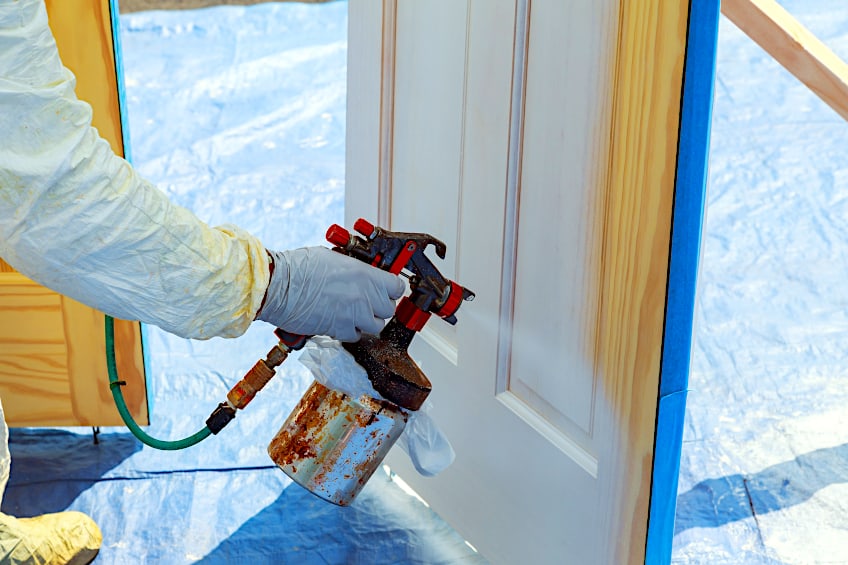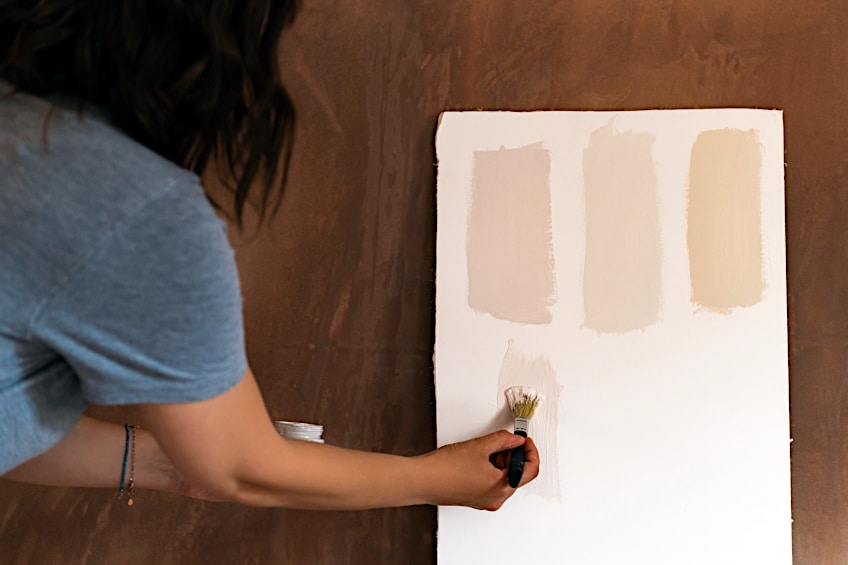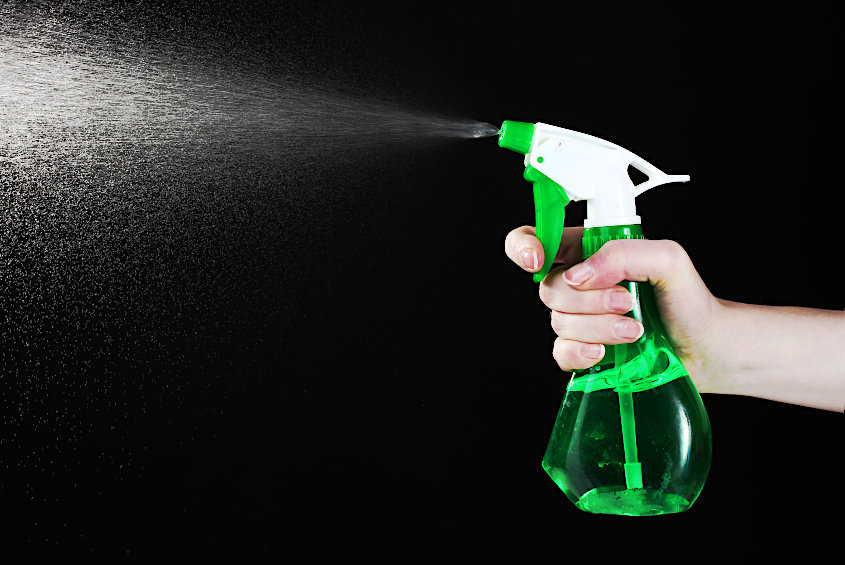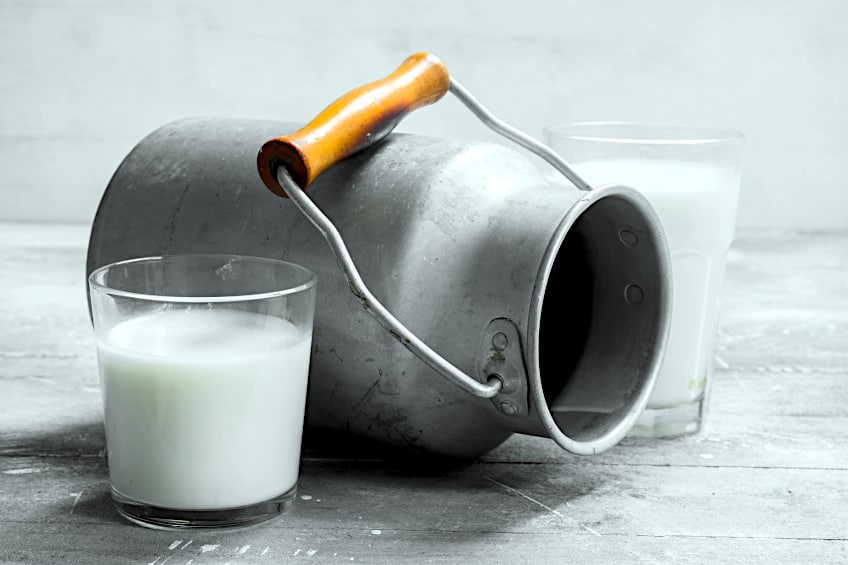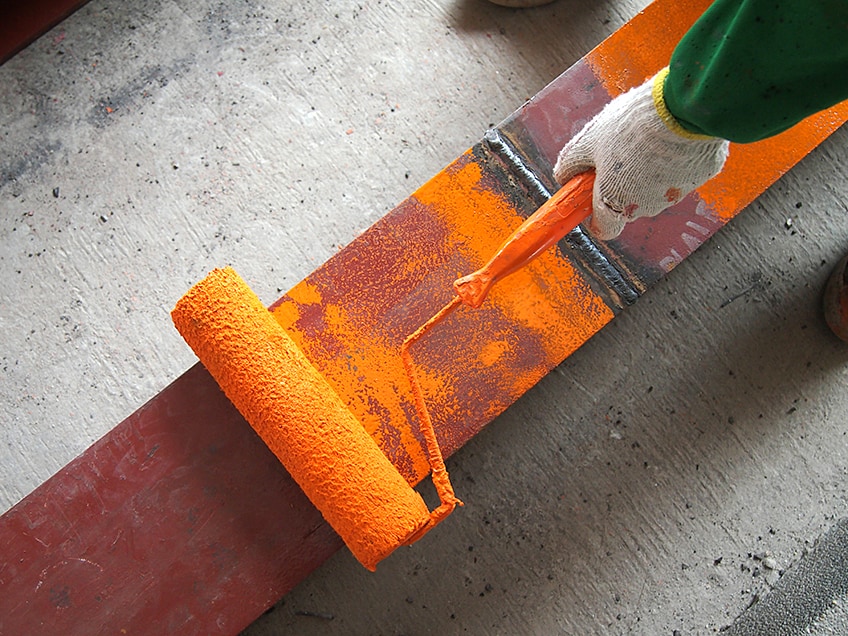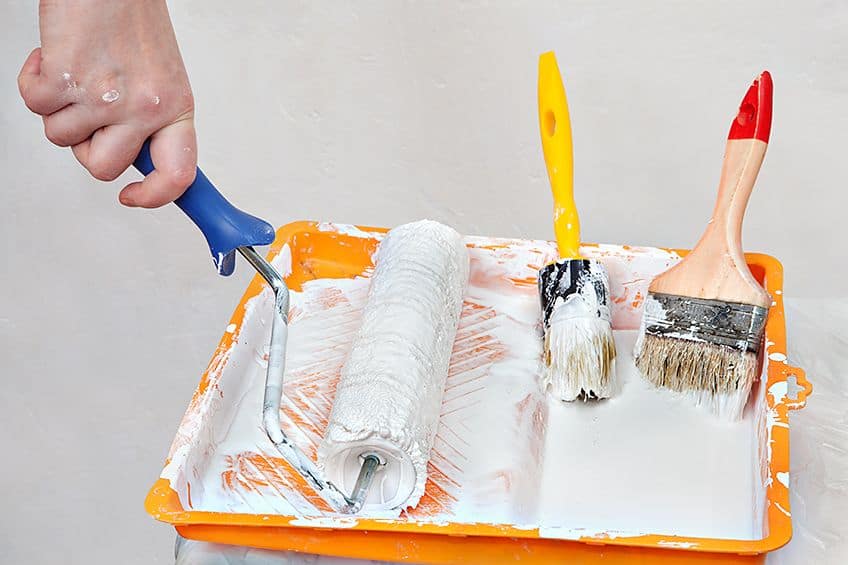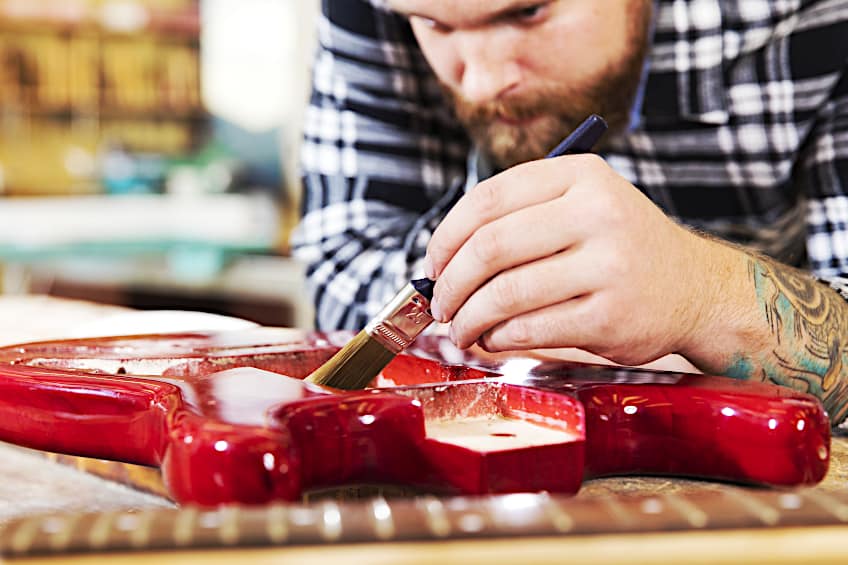Types of Paint – Different Paint Formulae and Their Uses
This post may contain affiliate links. We may earn a small commission from purchases made through them, at no additional cost to you. You help to support resin-expert.com
People have been using paint since the first proto-Human intentionally smeared ochre onto a cave wall. Whether people were painting their faces, the walls of their homes, or the boats they sailed on, we have always found creative and practical uses for paint. We’ve come a long way since we first learned how to mix raw materials together to create cave paintings, and these days there are many paint types to choose from. Let’s have a look at some of the different paint types, what they’re made of, what they’re used for, and why you should always ensure that you have the right paint type for your intended application.
Table of Contents
Why Are There Different Types of Paint?
Paint can be described as a surface coating. Essentially, a substance that sits on the surface of a workpiece and coats it, protecting it from external forces and improving it aesthetically. Paint is used in virtually every country on the face of the planet for a wide variety of applications, and its versatility has increased dramatically as research and production techniques have developed.
There are many different materials, all of which have varying degrees of surface friction, different textures, different forces they need to contend with, and different intended aesthetic appearances. Due to these variables, some materials are incapable of accepting certain paint types which leads to a specific paint type being needed to coat it.
Now this doesn’t mean that every paint is designed for a specific purpose. In fact, some paints are incredibly versatile and can be used on many different surfaces with little to no preparation. Keep in mind that this doesn’t always mean that they are better than the paints that have been specially designed to work with certain surfaces.
Other types of paint are highly specialized and might be designed for a particular application or industry. Other paints are simply niche formulas that have been designed to create a particular color, texture, or visual effect. These are usually more expensive than mass-produced types of paint, but this makes sense, considering they aren’t used quite often, and they can be pretty challenging to find.
Other paint types exist as a response to specific needs. Elastomeric paints came about as a result of a need for a weatherproof coating, and modern latex-based paints were produced to be less harmful to the environment and to ensure that interior rooms could be painted without the need for extreme ventilation measures and respirator masks.
Depending on how much it costs to produce a given paint type, it could end up costing more or less than other existing formulas. A good example is how acrylic-based paints and oil-based paints tend to cost more than latex-based paints. This is because the linseed oil base and acrylic polymer in these paint types are generally more expensive to produce, a cost that is eventually passed along to the consumer (you).
Different Types of Paint
Now that you know why there are different types of paint, we thought we’d walk you through some of the most commonly used paint types, what they are made of, what they are used for, some of their pros and cons, and how to ensure you achieve the best finish possible when using each paint type in future.
Water-Based Paint
Water-based paints can be described as a paint type where the majority of its base or vehicle consists of a substance that is largely water. Pigments and binders are added to this substance to ensure the correct consistency of the paint, which allows it to adhere to the surface of a workpiece and eventually dry and cure into a solid surface coating.
These paints are regarded as some of the safest to use indoors and around children and/or animals. This is because very few solvents are included in their composition, which means that no hazardous fumes are released during the degassing or curing stage.
Water-based paints are extremely popular when painting interior surfaces as they tend to have great coverage and lack the potent odor associated with other paint types.
Advantages and Disadvantages of Water-Based Paint
Water-based paints have many advantages that other paint types simply cannot compete with. As we mentioned previously, water-based paints are low in odor, but it is also rather versatile, can be used both indoors and outdoors, requires minimal preparation before use, can be easily diluted, and contain little to no VOCs (volatile organic chemicals).
There are disadvantages to water-based paint too. For one, it’s never quite as durable as other paint types.
When exposed to water even after drying, it can be easily wiped off or begin to run. Commonly used water-based paints are incredibly susceptible to impact, abrasion, heat, moisture, insect infestation, UV light, and mold. Water-based paints may also fail to cure in high humidity, high heat, or extreme cold.
- Low odor
- Can be used indoors and outdoors
- Versatile
- Easy to use
- Requires minimal preparation
- Contains little to no VOCs
- Get excellent coverage and value for money
- Dry and cure quickly
- Not as durable as other paint types
- It can run when in contact with water
- Highly susceptible to exterior forces
- Can fail to cure under extreme heat, cold, and/or humidity
- Can run if not properly applied
Types of Water-Based Paint
Water-based paint is available in two varieties. The first is latex water-based paint, which consists of a small amount of acrylic binder, water, pigment, and even a small amount of solvent. Latex paints have a runnier consistency, achieve better coverage, and are a bit cheaper than other water-based paints. Latex-based paints are not very durable and are quite susceptible to damage.
Acrylic water-based paints are the other, more widely used type of water-based paint. Its composition consists of more acrylic polymer, a bit more solvent, and more potent dye agents.
The increase in acrylic polymer gives the paint a thicker consistency while making it more durable, and slightly better suited to exterior applications. Acrylic-latex paint tends to get slightly worse coverage compared to its latex-based counterpart though.
Tips for Applying Water-Based Paint
Water-based paints are usually the first paints that most of us are introduced to in kindergarten. Therefore we generally understand how to use it, but when painting in the walls of your home it can take a bit more skill and a deeper understanding of the paint. Here are a few tips you can implement to ensure your new color scheme looks great.
For one, you should always ensure that your walls (or any other surface) have been cleaned and sanded before you begin. You should also ensure that you utilize the correct primer, as water-based paints require water-based primer. Also, ensure that if you are using latex or acrylic water-based paint that you use the corresponding primer for that specific paint type.
You should also ensure that you are using the correct type of water-based paint for your intended application. If you will be painting an exterior surface or a surface in a highly trafficked area we recommend using acrylic water-based paint as it is more durable. For interior low-trafficked surfaces, latex water-based paints are perfectly fine.
Oil-Based Paint
Oil-based paints were once the most popular paint type for decades. Their composition consists of natural linseed oil, binders, solvents, pigments, and/or dyes. This combination makes oil-based paints one of the most durable and arguably still widely used paint types on the market today, but it’s definitely not as popular as it used to be.
Oil-based paints used to be popular for both interior and exterior use due to their durability and longevity.
However, oil-based paints were found to contain a staggering number of VOCs, making the fumes they give off during application and degassing harmful to adults, children, animals, and the environment overall. These days, oil-based paints have to be produced following strict guidelines.
Advantages and Disadvantages of Oil-Based Paint
Oil-based paints are incredibly durable, can be used both indoors and outdoors, and are water-resistant, heat-resistant, as well as impact and abrasion resistant!
Oil-based paints produce a palpable rich color palette, require little regular maintenance, and have a thick consistency that allows it to protect the substrate once it has been allowed to dry and cure.
Oil-based paints have some notable disadvantages too. For one, they contain a lot of VOCs, so using them indoors around others that have respiratory comorbidities is a decidedly bad idea. This makes them bad for the environment too, and their thick consistency means they don’t get very good coverage. Oil-based paints can also be tricky to clean up once they dry, often requiring the use of solvents. Oil-based paints also quire a special means of disposal.
- Incredibly durable
- Can be used indoors and outdoors
- Heat and water resistant
- Impact and abrasion resistant
- Requires little regular maintenance
- Dried into a thick surface coating to protect surfaces
- Produces a rich, vibrant color
- Contain VOCs
- Not always advisable to use it indoors
- Gets poor coverage compared to other paint types
- Bad for the environment
- Can be difficult to clean up
- Requires hazardous waste disposal
- Take a long time to dry and cure
Types of Oil-Based Paint
There are two commonly used types of oil-based paint. The first would be enamel oil-based paint, which is commonly used inside and outside homes. This type of oil-based paint usually consists of linseed oil, which has pigment suspended in it along with binders and petroleum-based solvents. This is what allows it to dry into an extremely hard surface coating.
The second type of commonly used oil-based paint is alkyd-based oil paint. This paint primarily consists of alkyd resin that has been diluted into thinner. This paint is extremely durable and can be used in highly trafficked areas like warehouses, floor markings and signs, and other rouged applications. This paint is considered the modern successor to old-school oil-based paints.
Tips for Applying Oil-Based Paint
Oil-based paints can be challenging to work with especially if it’s your first time. They are quite thick, so judging how much to get in your roller can be difficult, but you can avoid all this and achieve an even finish by simply using a paint sprayer instead. If you don’t have access to a sprayer, practice on some spare material to get a feel for the consistency and perfect your technique for optimal coverage.
You should also ensure that the space you are painting in is well-ventilated. Since oil-based paints contain a lot of VOCs inhaling the fumes can be hazardous to your health. Also, ensure you wear a respirator mask and a set of gloves to avoid skin irritations. Keep in mind that oil-based paints take a long time to dry, so be sure to account for both curing and drying times.
Oil-based paints also have a tendency to change color as they dry. The downside of this is that you won’t be able to reduce the intensity of the color, only increase it by adding additional coats. This is another reason to test your paint on some spare material before you begin work on your actual workpiece.
Other Types of Paint
Although oil-based paint and water-based paint are some of the most widely used paint types, the world of paints has much more to offer. Let’s have a look at some other widely used paint types, as well as some of the pros and cons of using them, and how you can go about using these paint types effectively on your next project.
Acrylic-Based Paint
Acrylic paint is another very popular paint type. Pure acrylic paint consists of pigment that has been suspended in an acrylic polymer and may contain other binders and solvents as well. Acrylic paint is more durable than water-based paint, and less hazardous than oil-based paint, making it the perfect halfway point between the two.
Acrylic-based paints are even more versatile than water and oil-based paints, and depending on the quality and brand can be reasonably priced too. These days, acrylic paints have become more popular than oil-based and water-based paint thanks to their ease of use, availability, and versatility in everyday applications.
Advantages and Disadvantages of Acrylic-Based Paints
Acrylic paint is a great paint for a number of applications. It is versatile, it doesn’t take as long to dry as oil-based paint, it can be cleaned using some water and soap, it doesn’t contain as many VOCs as other paint types, it is far more affordable than oil-based paints, and it won’t crack when the substrate expands and contracts. The color produced by acrylic paint is also quite vibrant.
Acrylic-based paint tends to be a bit darker when it dries, which can be a bit confusing if you are using it for the first time.
Something that is often seen as a positive characteristic of acrylic-based paint is its drying time, but if it dries too quickly it doesn’t leave a lot of opportunity for corrections to be made. That being said, if it does manage to dry (and cure completely), it can take some elbow grease in addition to soap and water to remove.
- Highly versatile
- Does not take long to dry
- Can be cleaned with soap and water
- Relatively affordable
- Can expand and contract with a substrate
- Color is very vibrant
- Tends to get darker when it dries
- Fast drying time can leave little time for corrections
- Can be challenging to remove once it dries and cures completely
- Can be difficult to blend
Tips for Using Acrylic Paint
Acrylic paint is considered to be one of the easiest paint types for beginners to learn how to paint with. Therefore, there isn’t a big learning curve when it comes to blending, diluting, or mixing different shades together. However, you should watch out for the drying time of your acrylic paint because it can be difficult to manage coats between such quick drying periods.
If you can’t seem to work around the drying time, there is a way to extend the time it takes for it to dry. If you have a spray bottle like the type used to mist water on plants, you can use this and lightly spray the painted surface. You should also try and take care of the brushes you use when applying acrylic-based paint.
Acrylic paint can be incredibly difficult to get off paint brushes once they have had a chance to cure and harden. The best thing to do is clean off the brushes as soon as you are done with them and then submerge them in some water until you need them again. When you do use the brush again, remember to remove any excess water before dipping it in paint again.
Milk Paint
Milk paint is largely homemade. It consists of milk, lemon juices, and pigments of varying types. This paint was one of the first paint types that developed communities used at the beginning of civilization. These days, milk paint can be found in mass-produced versions that are sold in powdered form.
Milk paint isn’t as popular as some other paint types because it lacks the versatility, adhesion, and color quality that other commonly used paint types possess. For the most part, milk paint is generally used on hardwood surfaces as it produces a rustic, powdered texture that tends to be popular in modern homes.
Advantages and Disadvantages of Milk Paint
Milk paint has moved to the forefront of environmentally sustainable surface coatings in recent years. This is because milk paint is non-toxic, contains absolutely no VOCs, has virtually no odor to it, and can be found in a wide variety of colors, usually in an earthy texture.
Milk paint can also be made from scratch if you don’t want to purchase it in powdered form.
Milk paint does have some disadvantages. For one, it can be really expensive to purchase, and it can even be difficult to find in some parts of the world. Milk paint also needs to be mixed, and if it’s mixed incorrectly, it can become too thick or too thin to be applied. It also needs to be sealed once it’s been applied and does not adhere to very smooth surfaces very well.
- Environmentally friendly
- Non-toxic
- Has virtually no odor
- A wide variety of earthy colors
- Can be made from scratch
- Tends to be expensive
- Can be difficult to mix in the correct ratio
- Needs to be sealed once dried and cured
- Should not be applied to smooth surfaces
Tips for Applying Milk Paint
Milk paint is a bit tough to work with since it isn’t really sold in ready-to-use form. Most stores sell it in powdered form, which means you will have to mix it together in the correct ratios in order for it to function as intended. When mixing milk paint, we highly recommend using a small mixer to ensure the texture and consistency are ideal.
Once you’ve finished using the paint you should know that milk paint needs to be refrigerated in order for it to remain usable again. Once you decide to make use of the paint again be sure to stir the paint again and let the paint breathe for a while before you attempt to apply it.
Milk paint also should not be applied to surfaces with low surface friction. This is because milk-based paint tends to lack the natural adhesion that other paint types do. This is why engineered wood is rarely painted with milk-based paint due to the lack of porosity and wood grain that usually allows paint to adhere to it well.
How to Choose a Paint
Choosing paint for your workpiece can be challenging. However, there are a few guidelines you can follow to ensure that your workpiece looks great and that the paint adheres to the surface well and lasts for a decent amount of time. Below you will find some of the things you should keep in mind and consider when selecting a paint for your next workpiece.
What Type of Surface Are You Painting?
The substrate you are working with will often determine the type of paint you use. If you are painting an outdoor surface acrylic, oil-based, and acrylic water-based are one of the best choices. If you are painting indoors, acrylic, latex water-based, and even milk-based paint can be used as they are low in VOCs and don’t have much of an odor.
Exterior paints generally adhere better and dry harder, while interior paints tend to dry a bit softer and need a primer to adhere correctly.
How Do You Intend to Apply the Paint?
If you intend to use a brush and roller to apply your paint, you won’t be able to do so very well with really thick paints. Elastomeric paints and enamel paints tend to be applied more evenly using a sprayer, but paint types with a thinner consistency can be applied with both a sprayer and roller relatively easily. That being said, get to know the properties of the paint you intend to use so you know the best means of applying it.
What Finish Are You Aiming For?
While there are many different kinds of paint to choose from there are also different finishes and textures to aim for. Do you want a rough texture that could potentially highlight imperfections in the surface? Or do you want a smooth satin finish capable of hiding imperfections and improving the lighting in the room?
Understanding where your workpiece will be situated and how the texture will affect the overall look of the space it’s in will help you determine which finish is best for you.
These are the different kinds of paint you will encounter over the course of your painting journey. Using this guide should help you to determine which paint type is most applicable to your next project and how to use it effectively. If you still aren’t quite sure what paint type is best for you, don’t be afraid to experiment with spare material or use sample swabs.
Frequently Asked Questions
Can You Use Oil-Based Paint Indoors?
Yes, oil-based paint can be used indoors but this this isn’t recommended. Oil-based paint tends to produce a lot of hazardous fumes that can cause discomfort if inhaled, which is why if you do use it indoors, be sure that your workspace is properly ventilated during painting and while the paint is curing.
Is Water-Based Paint Durable?
Water-based paint is durable, but not as durable as some of its counterparts. Water-based paint doesn’t contain as many acrylic polymers and solvents as other paint types, which makes it eco-friendly, but it does lower its adhesion strength and makes it less robust.
Can Acrylic Paint Be Used on Wood?
Acrylic paint is one of the most versatile paint types on the face of the planet. Acrylic paint can be used on wood, plastic, metal, glass, engineered wood, and even composite materials. These days, acrylic paint, oil paint, and water-based paints are all popular choices for painting wood.


